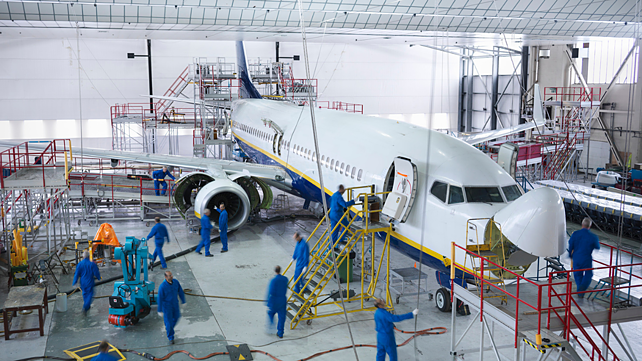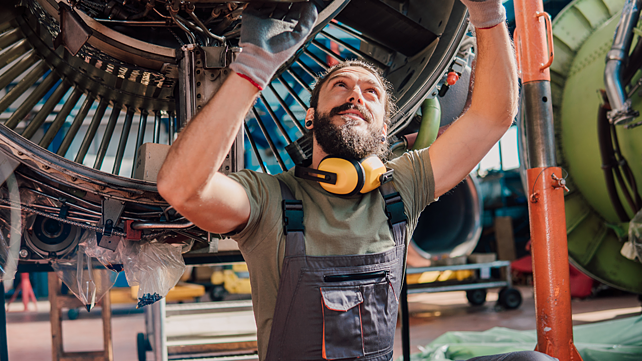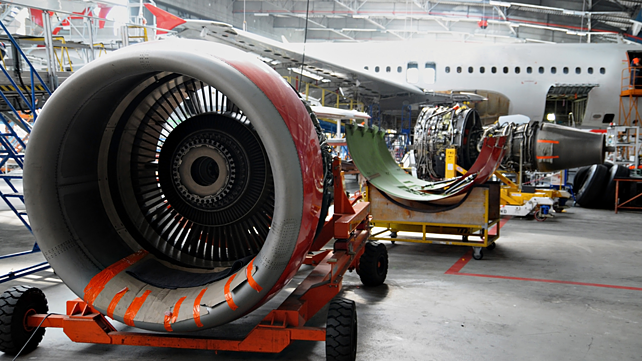
The aviation industry suffered significant losses owing to the pandemic. It would have been worse if not for the global air cargo sector being operational. In addition to regular cargo operations, converting passenger aircraft to freighter aircraft helped the maintenance, repair, and operations (MRO) industry sustain during an uncertain period.
However, to optimise the maintenance activities, MROs had to update their operational practices, which featured an increased influence of digital solutions such as remote inspections and virtual meetings. While these were ad-hoc upgrades, MROs should utilise various new technologies that would enable them to recover better and improve growth.
The Indian MRO Ecosystem
The Indian MRO ecosystem consists of five major entities serving commercial aircraft operators, including the top three – AirWorks India, GMR AeroTechnic, and AIESL (Air India Engineering Services Limited).
Revenues of Top 3 Indian MROs serving Commercial Aircraft (2019)
| MRO | Revenue (in INR) |
| AirWorks | 100 Cr + |
| AIESL | 28.5 Cr |
| GMR Aerotechnic | 0.98 Cr |
Source: Annual Reports and Estimated (for AirWorks)
Revenue is a good indicator of the investment capability of an organisation. As observed from the above table, the tentative revenue differences between the established MRO entities in India present a realistic picture of the Indian MRO sector.
AirWorks, a leading MRO in India, is a technologically superior entity and has developed in-house solutions to support aircraft maintenance activities. The company’s objective is to transition into an entirely paperless MRO. Their strong revenue figures will enable them to secure funding from traditional sources.
Additionally, Airworks is slated to receive significant funding from investors. As technologically advanced MROs are always sought after by aircraft operators, this funding can be utilised for implementing new technologies.
AIESL was an early competitor to AirWorks. However, the problems affecting the parent carrier (Air India) have limited their operations. Lack of significant revenues and funds for R&D to improve the MRO operations has resulted in a lack of technological upgrades within their aircraft hangars. While the cash injection will be possible post-Air India privatisation, the decrease in GST by 13% will help it sustain during the ownership transfer process.
GMR AeroTechnic (GAT) is a close competitor to AirWorks, but is much smaller in scale. Regarding technological improvement, GAT has become the first MRO entity in India to install an inflatable hangar that can be utilised for both planned and emergency maintenance. While this addition is expected to increase the service capacity of GAT and is a scalable solution, they are yet to include any other enabling technologies in their hangars. Their initiative of continued investment in new technologies, despite low revenues, will set an example for other upcoming commercial aircraft MROs (like AAR-Indamer Aviation).

While the top players’ revenue figures indicate their technology adoption capabilities, government support towards aerospace entities, such as developing an aviation hub in Nagpur (MIHAN) or reducing the GST on aircraft MRO activities, has helped these MROs sustain during the pandemic.
Technologies Indian MROs Could Implement In Their Hangars
While the Indian MRO ecosystem has been making slow progress in technological implementations, MROs worldwide have already started implementing advanced solutions in their hangars. Some critical solutions currently in use include:
- Additive Manufacturing, which is commonly known as 3D printing, is a technology that has been in use since the 1990s. However, it is now being actively implemented in MROs such as AFI – KLM E&M (Air France Industries KLM Engineering & Maintenance). This has reduced the time for tools acquisition by MROs by almost 90%.
- Contactless technology, such as RFID (radio frequency identification), is increasingly used in hangars for tracking parts, tools, and, in some cases, aircraft technicians. RFID tracking enables effective deployment of tools and personnel allocation, thereby reducing aircraft TAT (turnaround time).
- Augmented Reality technology enables effective training of technicians. Scenarios that may be dangerous to create within the training environment can be effectively simulated via AR models.
- Drones & Robots are being used in hangars primarily for preliminary inspection purposes. Drone-based inspections are being implemented for identifying defects on the top of the aircraft fuselage. At the same time, crawler robots are used to inspect the underside of the aircraft fuselage. These solutions are capable of detecting faults at a faster rate compared to manual methods.

The technologies mentioned above involve a high degree of data processing, which makes the implementation of robust cyber-security solutions a critical aspect in utilising these technologies.
While the Indian MROs are initiating technological transitions within their hangars, the adoption and utilisation of new technologies have been very slow. Every new technology implementation requires significant investments by the MROs; most technologies discussed above, despite having a high rate of investment, also offer long-term gains, especially in improving the efficiency of MRO operations.
Conclusion
Based on the revenue overview of the top three MROs, it is expected that AirWorks would lead the technology implementation in the Indian MRO sector.
In the post-pandemic recovery period, it is crucial for capable MROs like these to invest in enabling technologies. Global MROs were able to sustain during the pandemic by performing critical tasks and operations with the help of virtual solutions, which included meetings, instruction delivery, and inspections. Indian MROs would be better prepared to deal with unforeseen disruptions in the future if similar solutions are implemented here.
About the Author: Vedhas Sabnis is a Research Analyst in the Aerospace & Defense Practice at Frost and Sullivan.